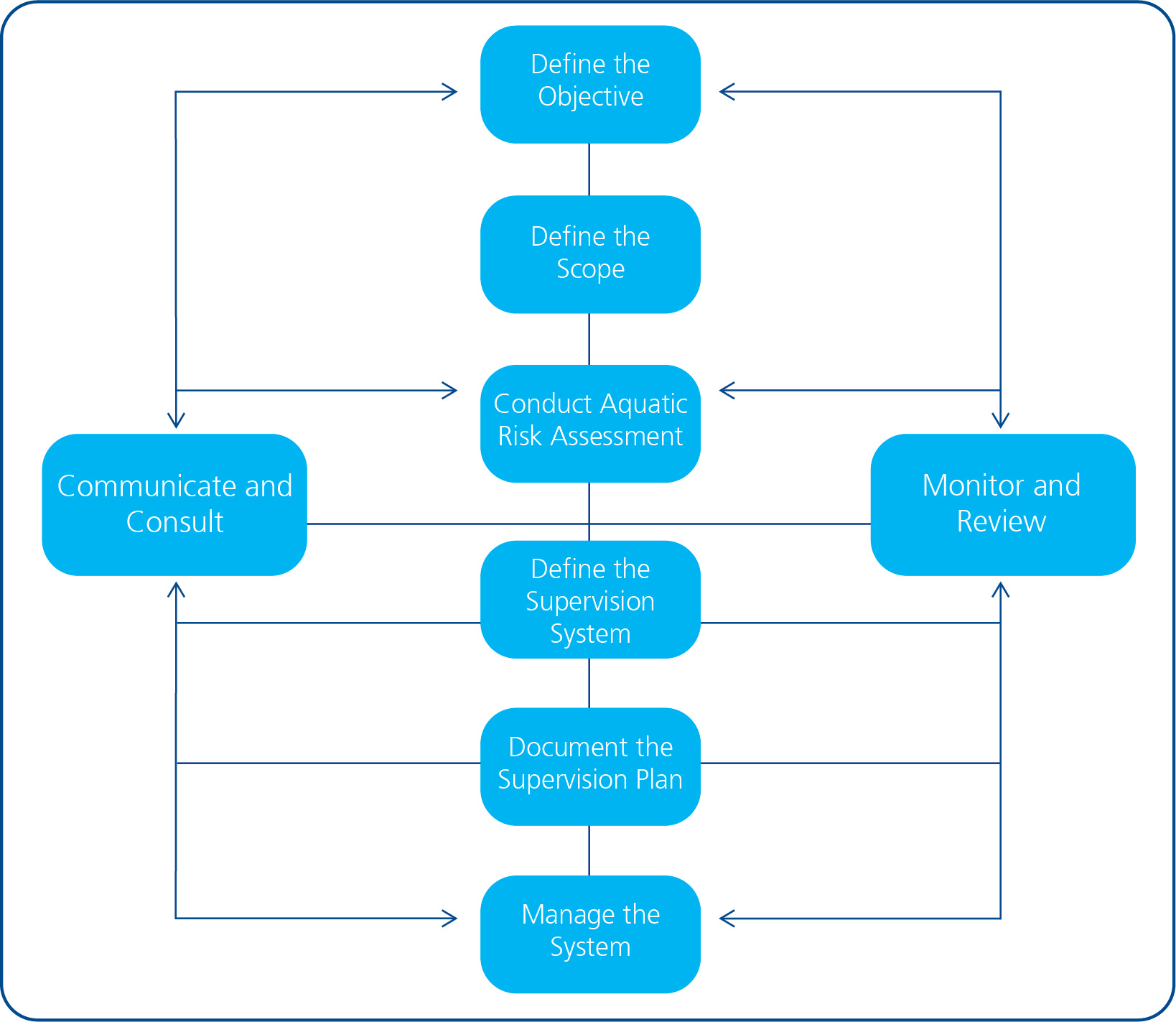SV3 - Determining Supervision Requirements
| Issue Date | Effective Date | Version |
|---|---|---|
| 20/01/2018 | 01/09/2019 | 1.0 |
Purpose
To ensure when the owner or operator of an aquatic facility is preparing a supervision plan, the parameters for developing the plan are defined.
Preparation for a Supervision Plan
The development of a Supervision Plan should be undertaken through a structured process of identifying and analysing potential aquatic risks in the aquatic environment to determine the supervision policies and procedures that should be prescribed.
The Supervision Plan should be comprehensive, while keeping the structure as concise, simple and flexible as possible. It should also be continually monitored and improved upon, ensuring ongoing relevance to the needs of the facility and all stakeholders.
The development of the Supervision Plan should be a cyclical process and should be continually evaluated and revised as appropriate.

Components of a Supervision Plan
A Supervision Plan for an aquatic facility should include but not be limited to the following:
- The arrangements to ensure that those resources and services that are needed to supervise the aquatic environment are available and effectively utilised
- The arrangements for supervising the aquatic environment including the roles, responsibilities and rostering of staff
- The measures taken to prevent and decrease the likelihood of aquatic risks from occurring
- The measures taken to reduce the severity of potential or actual aquatic emergencies
- The arrangements for testing, monitoring and improving supervision at an aquatic facility
The actual writing of a Supervision Plan needs to be preceded by careful planning, based on an appreciation of the aquatic risks and the availability of supervision resources both internal and external to the aquatic facility.
This ensures that the aims, objectives and structure of the Supervision Plan are clear and realistic and that supervision measures specifically focus on prevention rather than response.
Defining the objectives
The objective of supervision at an aquatic facility should be expressed as a broad statement of intent. It should be based on the fundamental reasons for developing a Supervision Plan. Examples of an objective are:
- To provide a system and resources to effectively supervise the patrons within
To ensure all patrons safely enjoy the aquatic environment within
Defining the Scope
In preparing for supervision at an aquatic facility, the parameters that will characterise the framework for developing the Supervision Plan should be defined.
These parameters should coincide with the context of the aquatic facility established in your risk management policy but specific define the scope of supervision activities and identify any limitations.
Defining the scope for supervision of an aquatic facility should include the below list, however, there may be others not covered here that are specific to a particular aquatic facility.
- the location of the facility, including its street address, any significant landmarks and the nearest intersection (if any)
- a detailed map
- showing the site of the aquatic facility
- sizes (length, width and depth) of all pools and aquatic environments
- identifying all hazards in the area that are known to the operator and the location of all facility access points
- a brief description of the nature of the facility and its operation
- the physical areas within the aquatic facility where supervision is required and for which Lifeguards are responsible (i.e. Swimming Pools, Change Rooms etc.)
- aquatic users and staff to be covered should be defined
- a description of the activities (structured and unstructured) that are offered or take place within the aquatic environment
- the maximum number of persons and types of persons including workers, likely to be present at the facility throughout the operating times of the aquatic facility (i.e. Mornings / Afternoons or School Holidays / Winter etc.)
